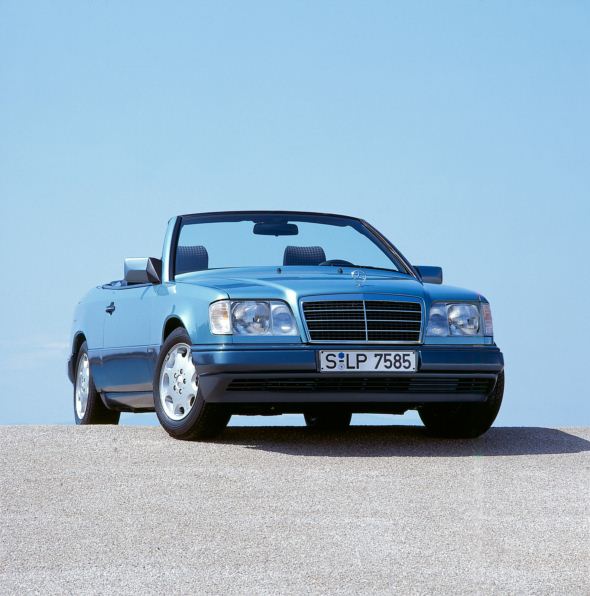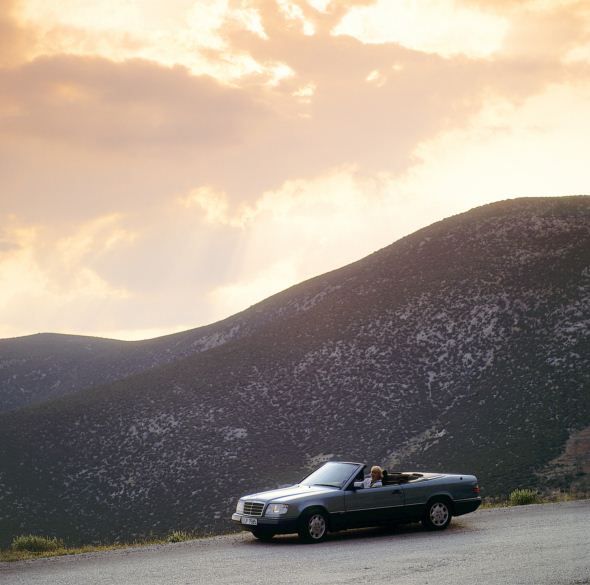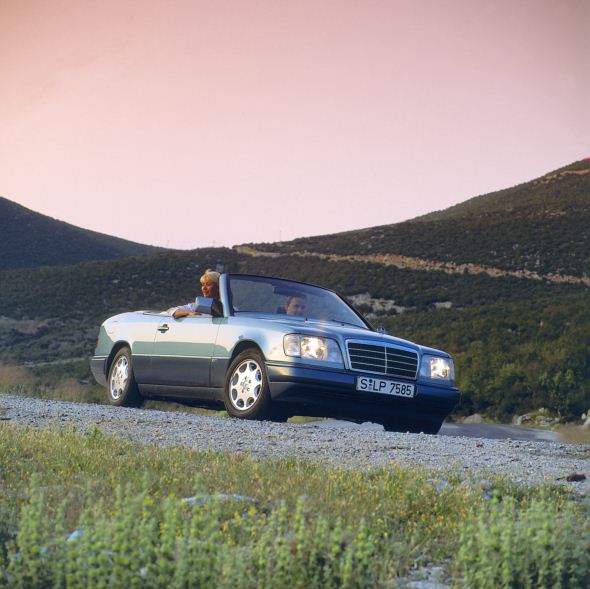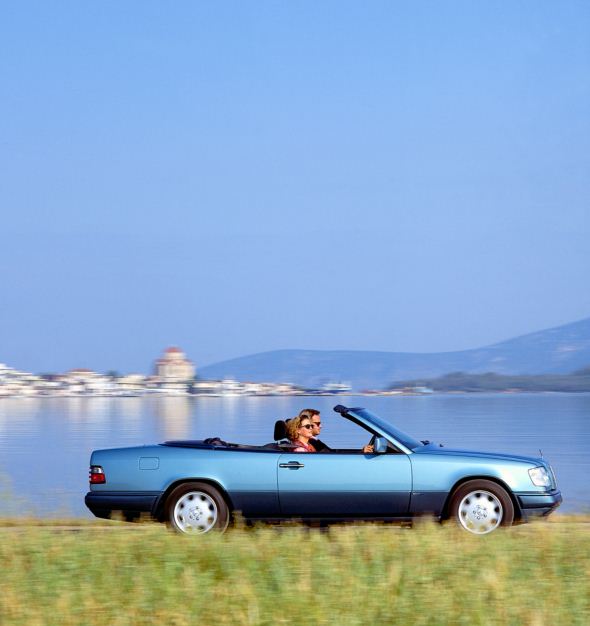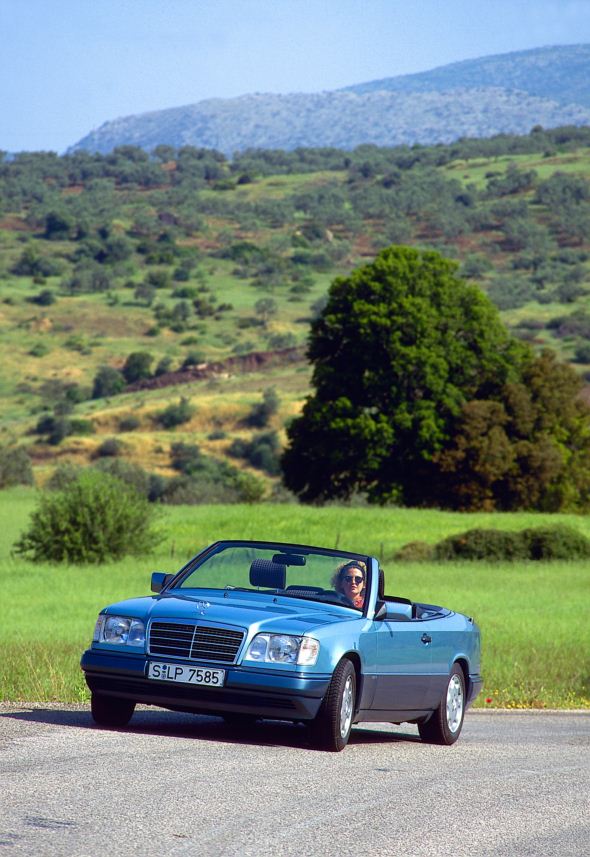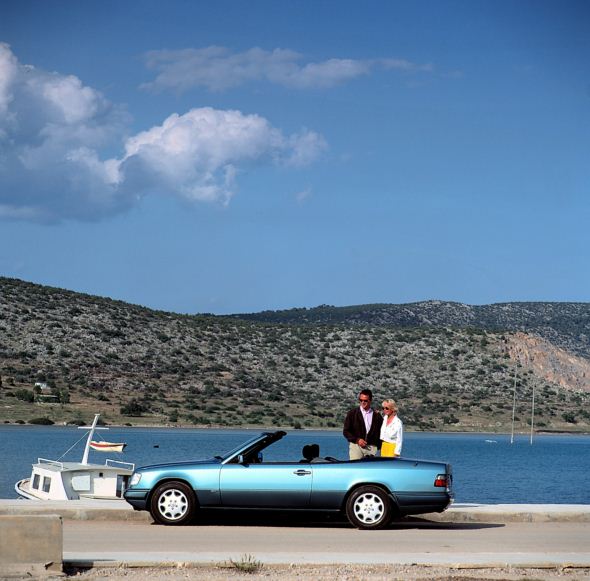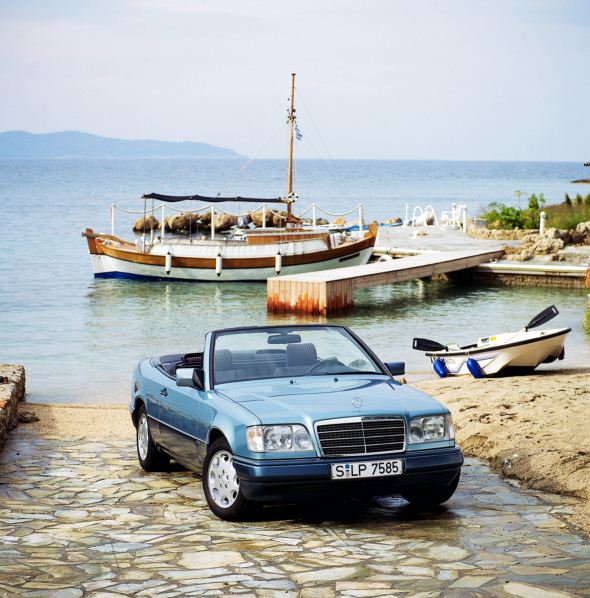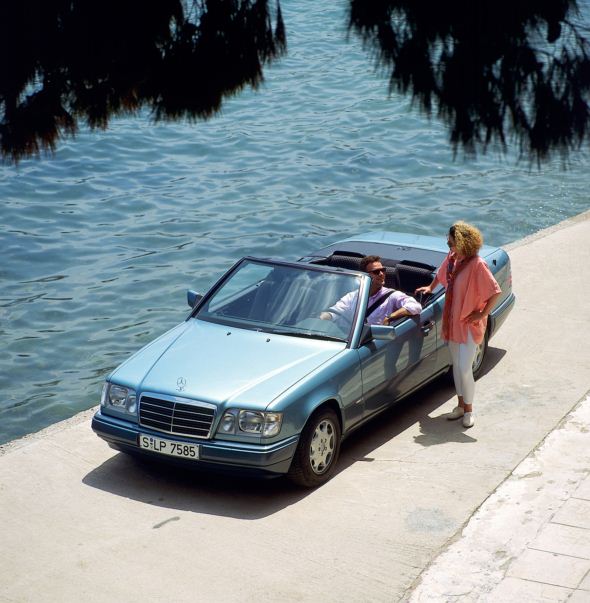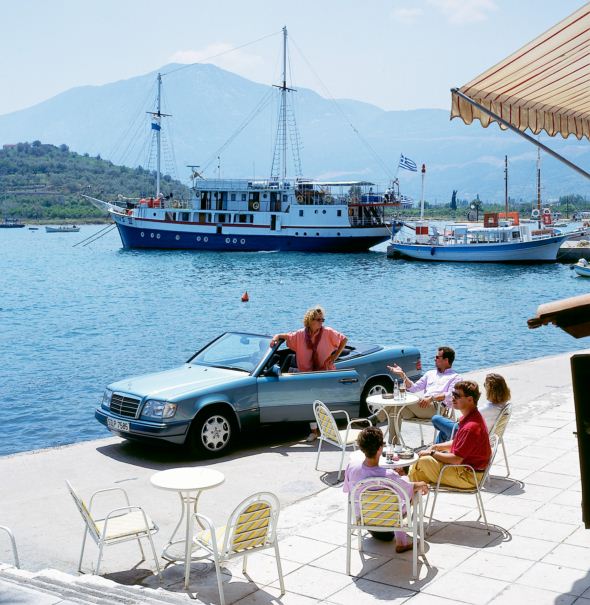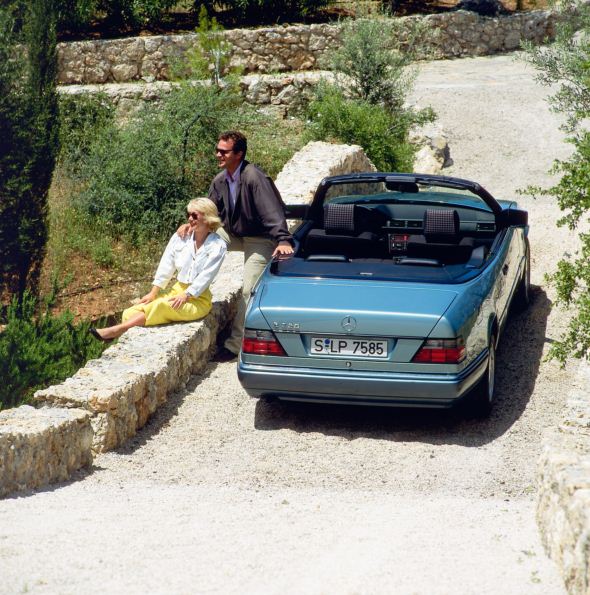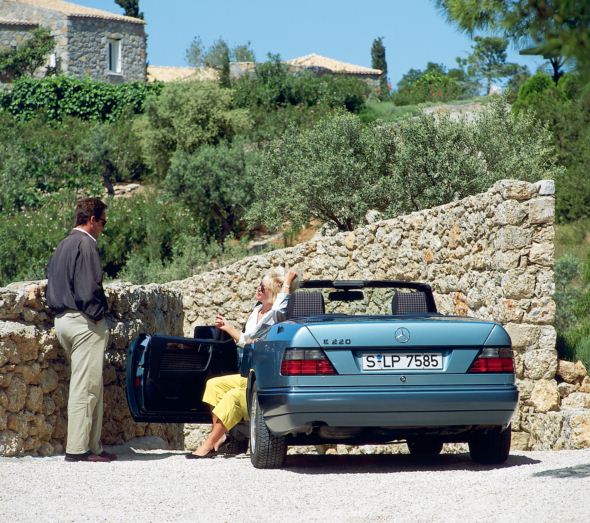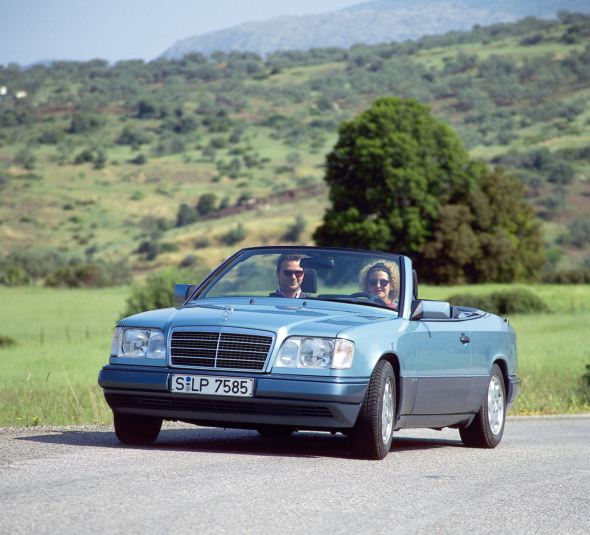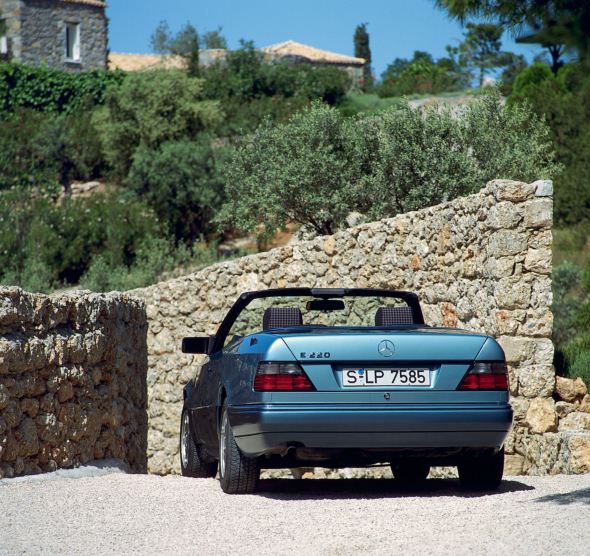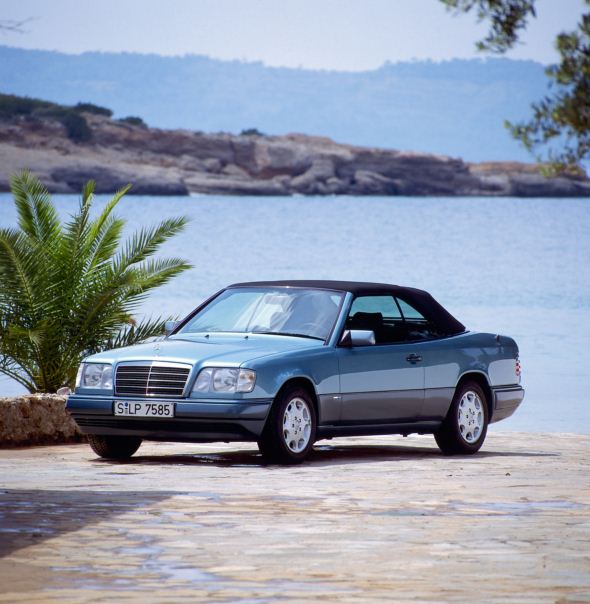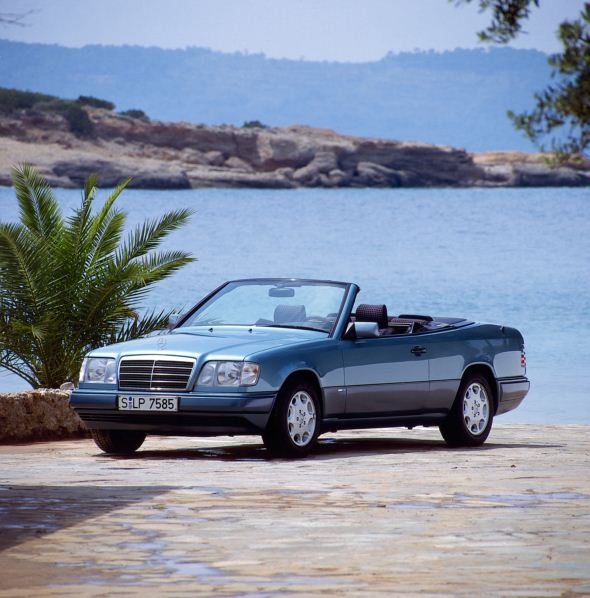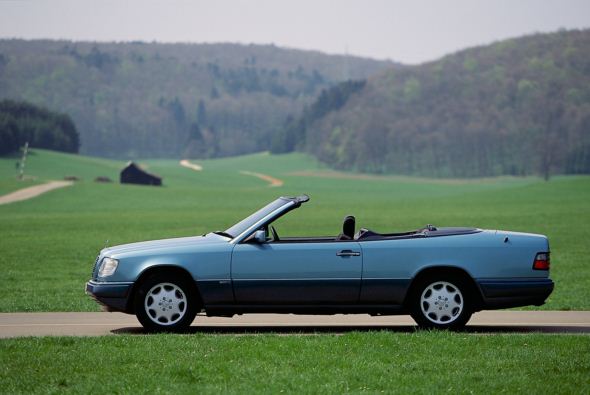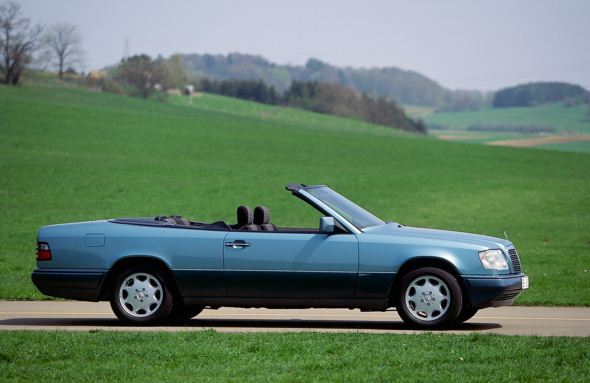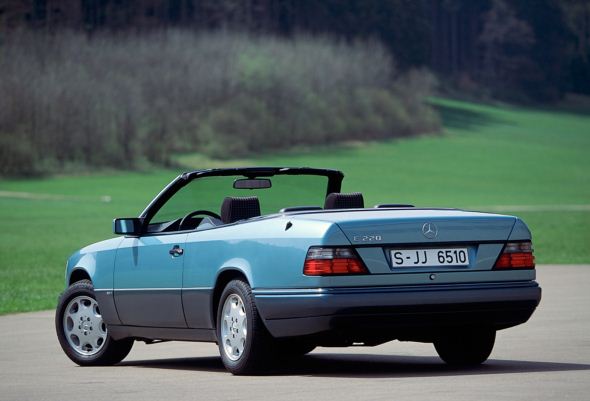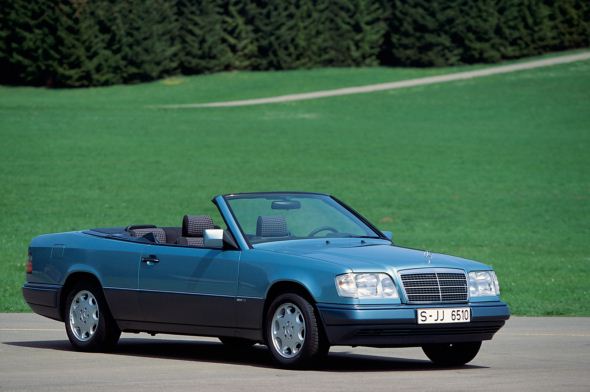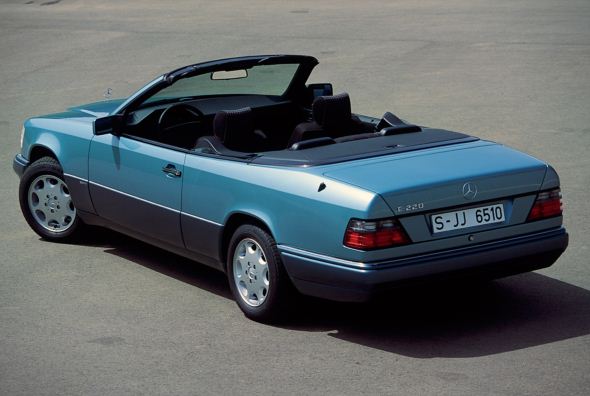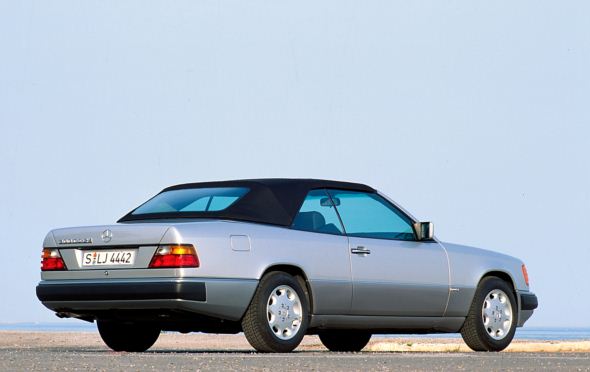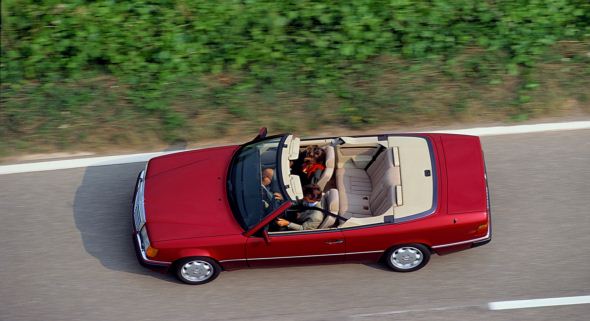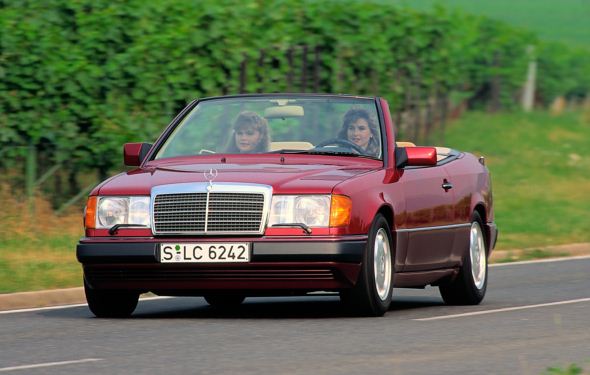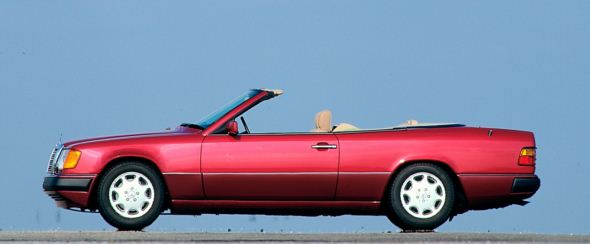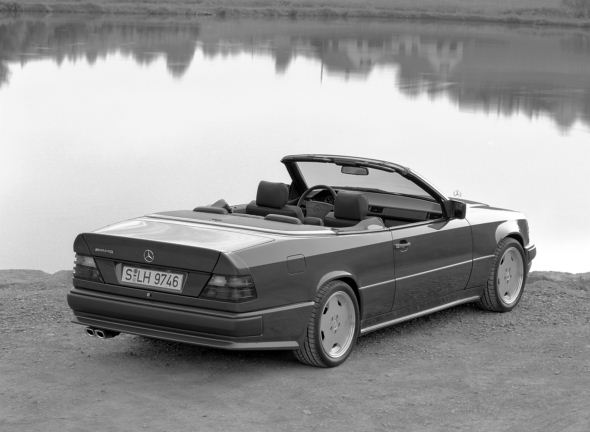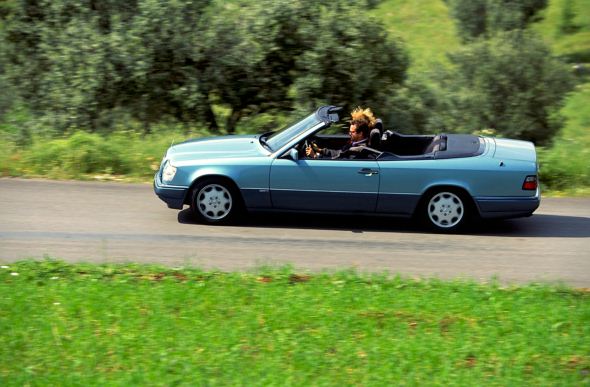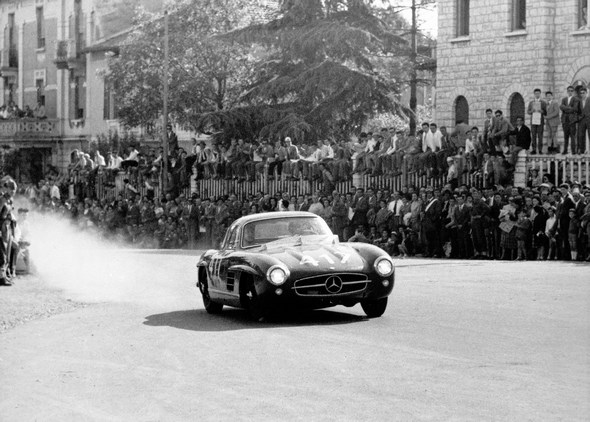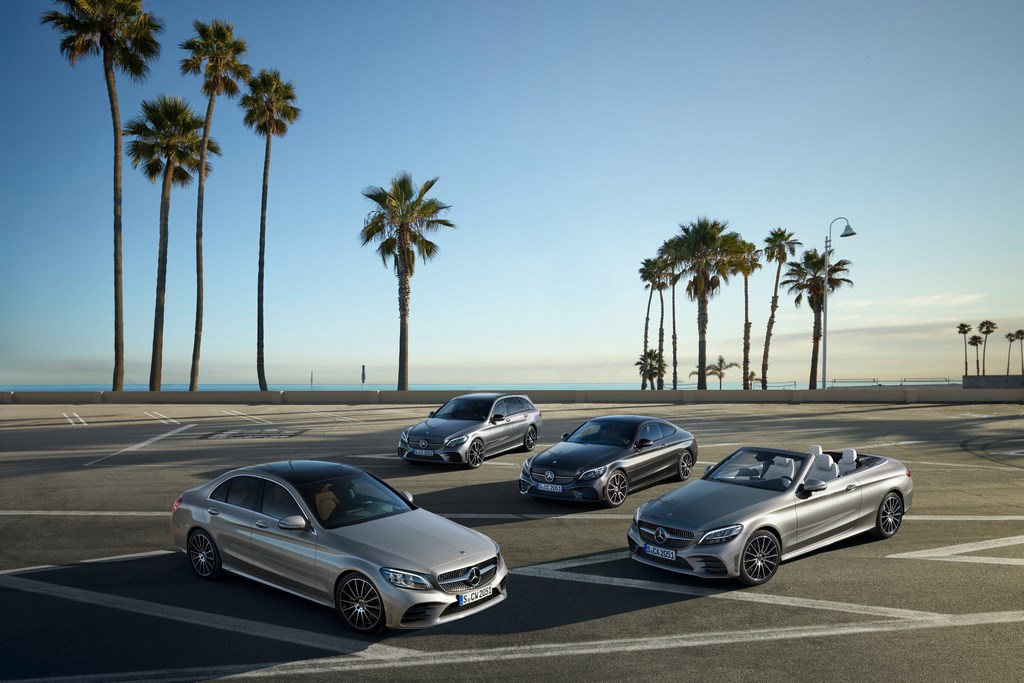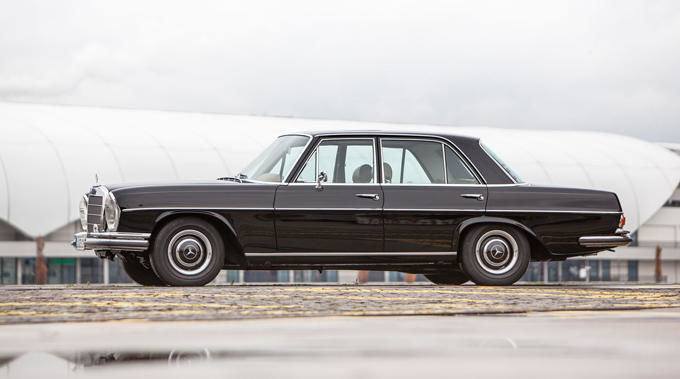Modern classics: the Cabriolets of the Mercedes-Benz 124 series (1991 to 1997)


- Classics during their own production period
- Proven technology from the Saloons and Estates of the series
- Mercedes-Benz E 36 AMG is the top-of-the-range model
Stuttgart – In 1991 Mercedes-Benz breathed new life into an old tradition: after an interruption of exactly 20 years, the brand returned to the market with a four-seater cabriolet, developed as a derivative of the intermediate class 124 series saloon. The debut vehicle was the 300 CE-24 Cabriolet, which was built until 1993.

Its immediate successor was the E 320 Cabriolet, but then came also the E 200 Cabriolet and E 220 Cabriolet models, as well as the E 36 AMG Cabriolet as an exclusive highlight. Each of these were to become classics in their own right during their production period. What is more, they each had the potential to become genuine pieces of automotive history, since their production period – until 1997 – was relatively brief and total unit numbers amounted to just 33,952 examples in all.
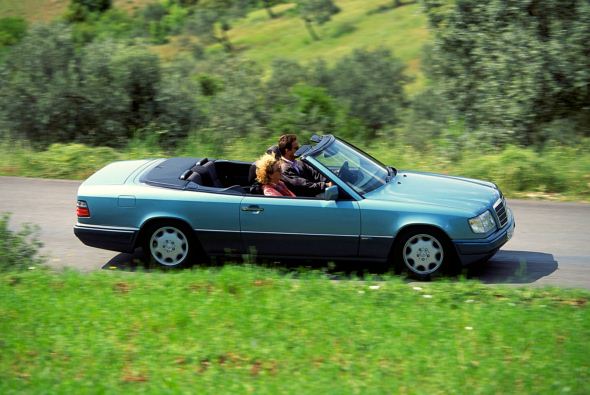
The engineering in the Cabriolets came from the series’ four-door counterpart. Features that demonstrated the company’s innovative strength included, for example, the eccentric-sweep panoramic windscreen wiper, which offered the largest swept-area of any passenger car, as well as multi-link independent rear suspension and shock absorber strut independent front suspension located by individual wishbones. The braking system was also borrowed without modification from the Saloons.
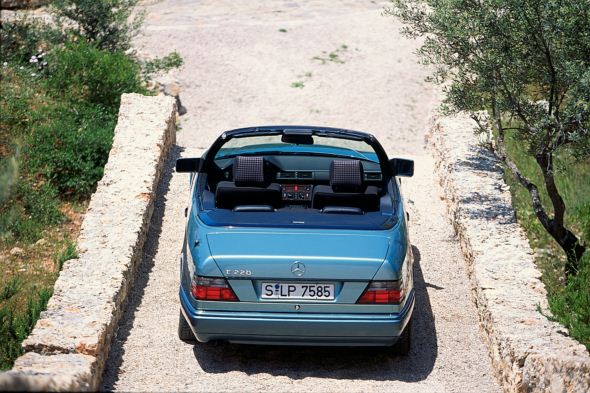
The body of the Cabriolet took after the Coupé, presented in 1986. Both of these were rather shorter than the Saloon. Other stylistic features included the slightly flatter front and rear screens, an absence of B-pillars and just two doors. Nevertheless, conversion to the open-topped vehicle was extremely complex: in order to meet customary Mercedes-Benz levels of safety and quality the Cabriolet had to be fitted with numerous modified or redesigned structural components – approximately 1000 all-new design elements in total.
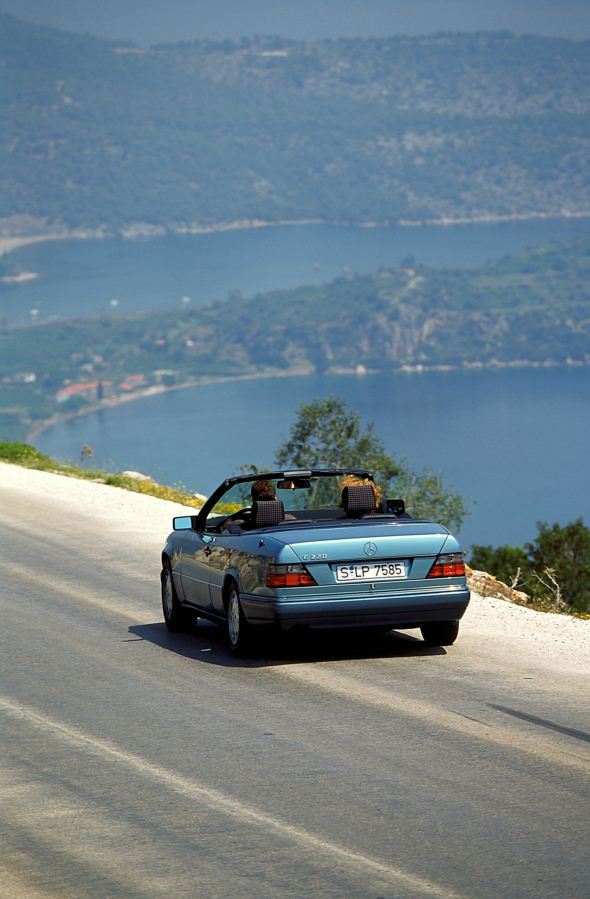
In addition, the engineers designed a sophisticated protection system in the event of a rollover accident. This involved an extendable/retractable sensor-controlled linear rollover bar behind the rear passengers, which deployed automatically within 0.3 seconds in the event of a rollover accident. The A-pillars were also reinforced. The sum of all these measures brought the Cabriolet of the A 124 series – to give the model its precise in-house designation – to the same protection level as its closed counterpart.
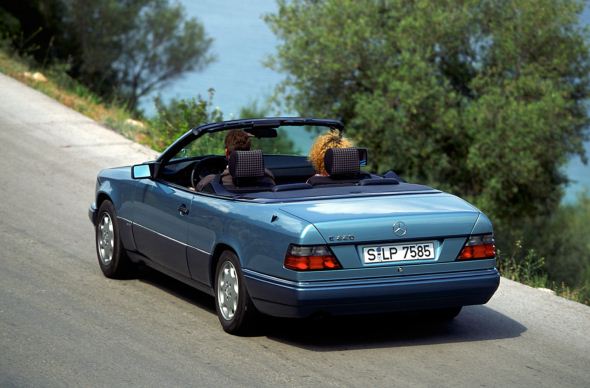
The padded soft top and heated rear windscreen made of safety glass made the vehicle practical for year-round use. When the roof was open, it was stowed completely in a compartment behind the rear seats, hidden by a fixed cover plate and leaving nothing above the body line to disturb its elegant cabriolet form. In open-topped mode, in particular, the vehicle exuded classical beauty.
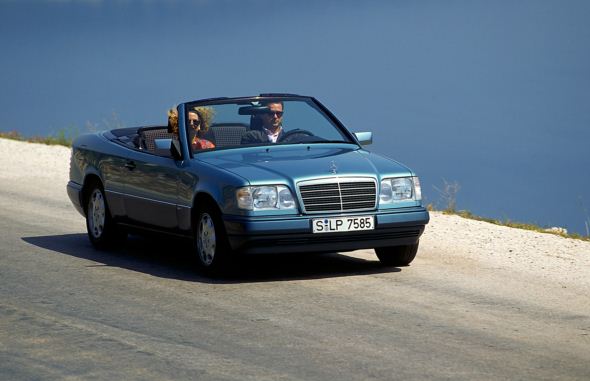
In terms of comfort, the Cabriolet offered all the advantages of the other models in the series, making for high-class travel whether in urban traffic or on long-distance hauls. At the same time, the brand’s definition of comfort was exceptionally comprehensive, going beyond simply physical well-being. A good example was the low level of noise afforded by the Cabriolet of the 124 series with closed roof. Although this was clearly slightly higher than in the Saloons, the padded soft top and tight-fitting joints ensured that noise levels were kept below a maximum level; on the one hand, this came as a welcome relief to passengers, on the other, it was much less tiring on drivers over lengthy periods on the road.
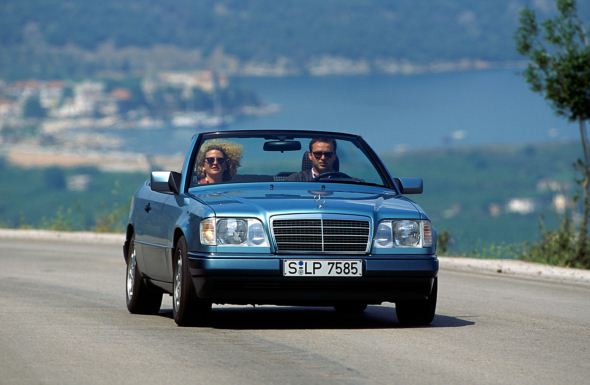
The Cabriolet also featured an electric belt feeder, which automatically presented the seat belt comfortably to driver and front passenger once they were seated. This equipment feature was also as much about safety as comfort, since it served to simplify the task of fastening the seat belt.

The fact that the Cabriolets of the 124 series achieved classic status during their own production period is now of great benefit in today’s market. Since they were always considered special vehicles, and often used as second cars, the condition in which vehicles are offered for sale today is generally high and actual mileages often low. For anyone interested in a Cabriolet of the 124 series as a modern classic, therefore, the quality of vehicles is basically sound – nevertheless it is essential to take a close look in individual cases.
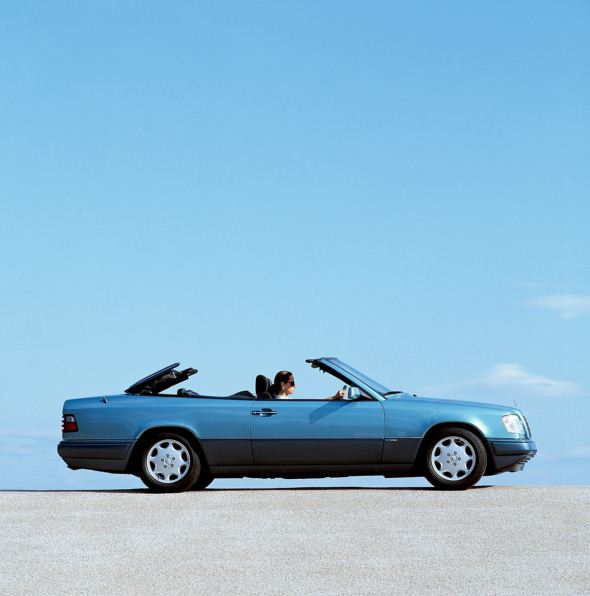
There are also vehicles that come with a manufacturer’s warranty, however. Mercedes-Benz Young Classics regularly has Cabriolets in above-average condition and which are therefore supplied with a warranty – an offer unique in the automotive industry.

Regardless of the modern classic’s origins, however, the exceptional Mercedes-Benz original parts supply is sure to help with maintenance. For virtually every part can be procured via a Mercedes-Benz partner and the company’s own ordering system; delivery is usually made overnight. Some authorised service shops – those with outstanding competence in handling older vehicles – have even been designated Classic Partners. In addition, all Mercedes-Benz sales and service outlets continue to provide a high level of technical expertise. Not for nothing does the slogan “Service for a lifetime” apply to all vehicles of the brand.
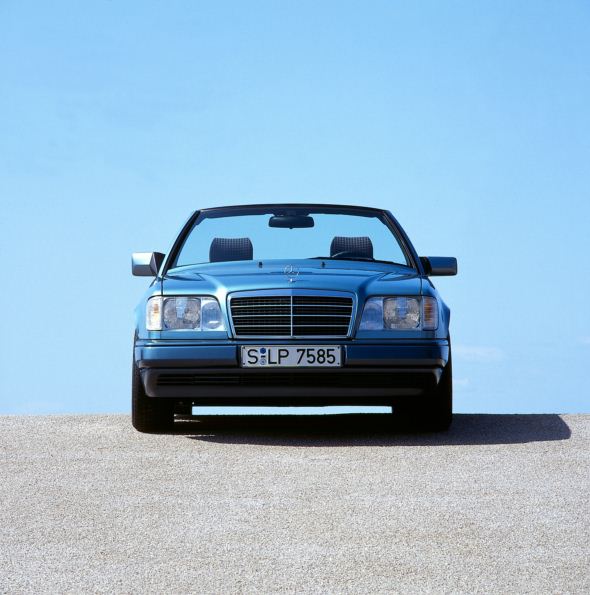
Model history: the A 124 series (1991 to 1997)
- Investment of engineering expertise guarantees quality and safety of the open-top vehicle
- Five engine variants available
- Fully retractable soft top creates an elegant cabriolet silhouette
In September 1991, as a further body variant of the 124 series Mercedes-Benz presented the 300 CE-24 Cabriolet. Production began in 1992. Cabriolet development was based on the Coupé, and in terms of mechanical components the Cabriolets were identical with their four-door counterparts. Like the Saloons they were equipped with multi-link independent rear suspension, thereby further improving ride quality compared with predecessor models, as well as shock absorber strut independent front suspension located by individual wishbones. The braking system was also borrowed without modification from the Saloons.
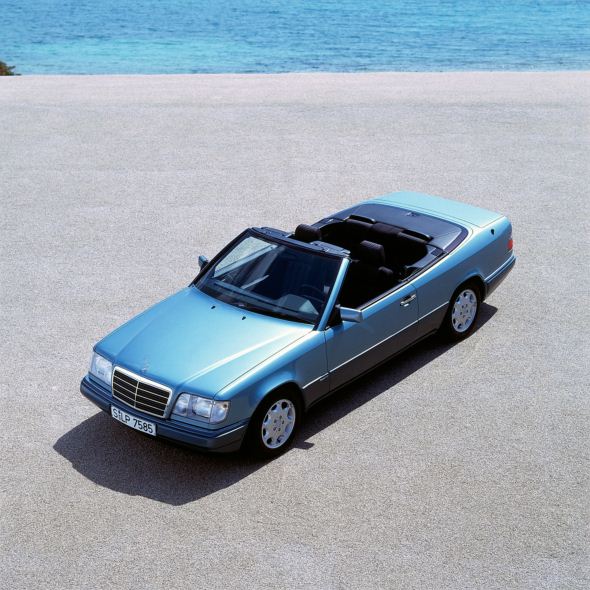
After a great investment of engineering know-how, the two-door was prepared for its role as an open-topped car – adequate stiffening of the body alone required the redesign of 1000 parts. Each Cabriolet needed a total of more than 130 kilograms of additional sheet metal to structurally compensate for the 28 kilograms lost from the Coupé roof and to meet the safety standards that applied to the Saloons, Estates and Coupés of the series. Body vibrations, a system-related weak point of open cars, were eliminated by four vibration absorbers fitted in the left shock absorber strut, the roof frame and the side boot recesses.

To make up for the lack of side roof frame, the A-pillars were welded together with metal sections inside the pillars to form a sturdy unit in the area prone to buckling. This enabled the vehicle to achieve stability levels similar to those of a saloon in the critical roof impact test; extreme tests in which the entire vehicle was suspended by an A-pillar provided a particularly impressive demonstration of the robustness of the design. This combination of A-pillar and automatic rollover bar produced a fully-fledged safety system.
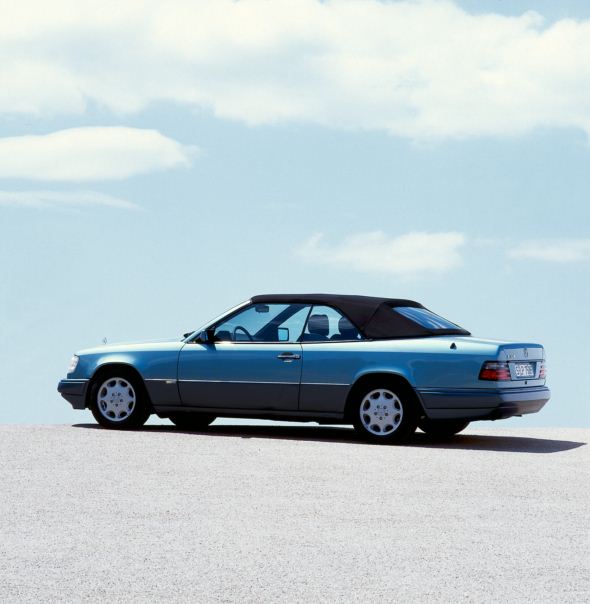
Specifically for the 300 CE-24 Cabriolet, a linear bar arranged behind the rear seats was developed that extended almost perpendicularly within 0.3 seconds in the event of a rollover. Simultaneously it served rear-seat passengers as a head restraint. For this purpose the rollover protection could also be extended and retracted manually.
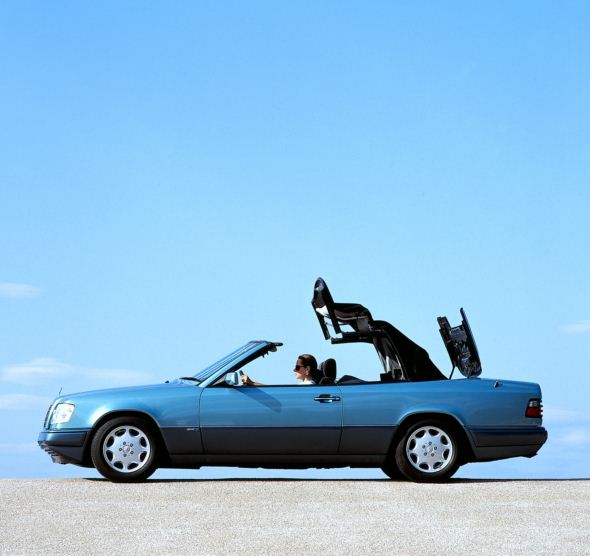
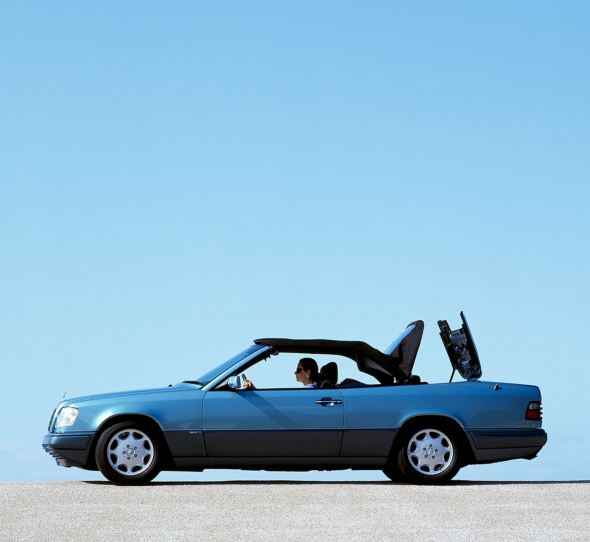
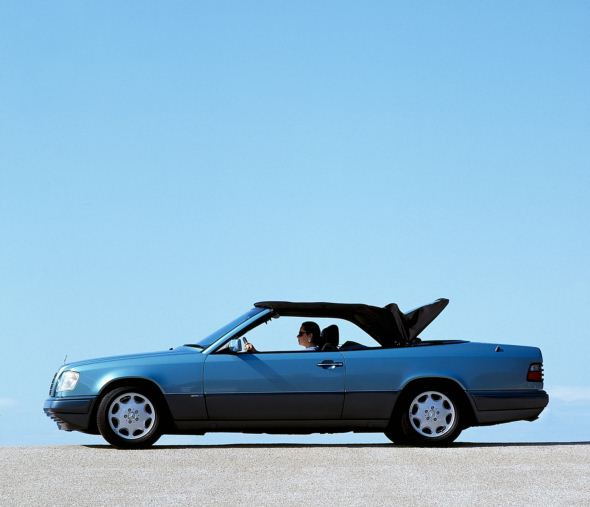
Complex soft top design
The fully retractable top impressed with an abundance of well-thought-out technical details. Retracted, the high-precision structure, which weighed 43 kilograms and had 27 linkage parts and 34 joints, occupied a mere 80 litres of space, so that the car still had a generously proportioned boot. The large heated rear window made of safety glass was screwed flush with the outer skin by a double frame, affording undistorted rear vision. To improve the convenience of operation, as an optional extra there was an electrohydraulic actuation system for the top.
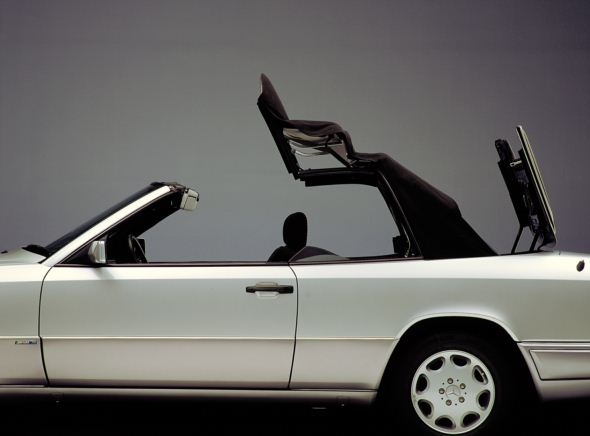
Ten valves and twelve electric limit switches controlled the perfect sequence of three swivelling movements, as well as the correct engagement of the different locking mechanisms, and monitored the closed condition when the car was on the move.
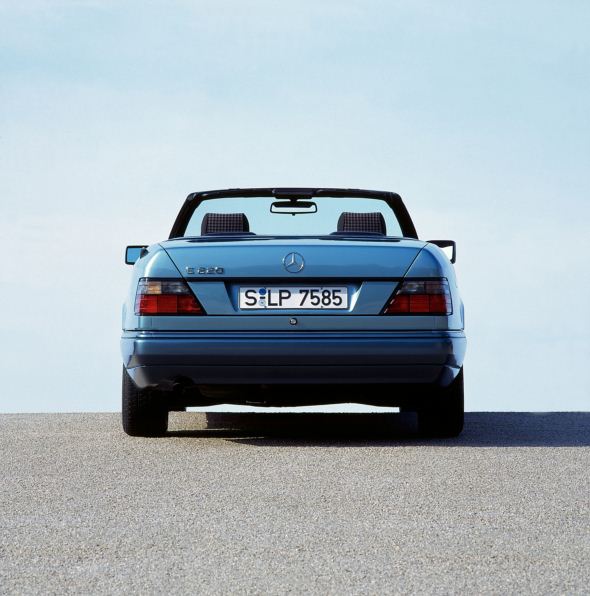
As with the Mercedes-Benz Coupés of the day, a belt feeder automatically brought the seat belt to a comfortable position once the driver or front passenger had taken up position. This comfort feature was necessary because with the absence of a B-pillar the seat belts were mounted comparatively far back.
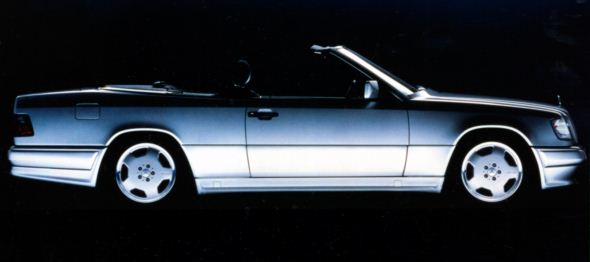
Under its bonnet the 300 CE-24 had a four-valve six-cylinder M 104 engine, the unit that had been presented in the SL of the R 129 series. In the four-seater Cabriolet it developed an output of 162 kW at 6400 rpm.
Six months after series production start-up the 300 CE-24 Cabriolet, along with all other vehicles in the 124 series, received a much higher-quality standard equipment package. The scope of delivery now included driver’s airbag and electrically adjustable left and right exterior mirrors. The Cabriolet was equipped as standard from production start-up with central locking and five-speed transmission, features that were simultaneously adopted as basic equipment in the 124 series.
In June 1993 the 300 CE-24 Cabriolet along with all 124 series models, was revised, stylistically updated and adapted in line with the other model series. The most striking feature of the modified vehicles was the radiator grille, which was redesigned after the S-Class. This so-called integrated radiator featured a much narrower chrome surround compared with the previous design, and the Mercedes star sat on the bonnet as in the S-Class saloons.
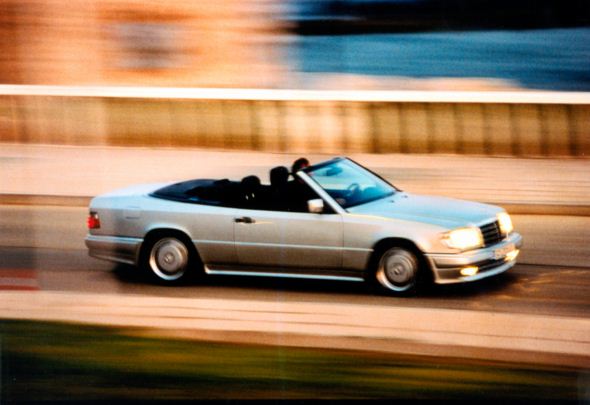
The light units were also noticeably modified to include colourless glass covers on the front direction indicators and bi-chromatic covers on the taillights, which were uniformly tinted white-grey over the indicators and reversing lights. The yellow indicator light was thus generated front and rear from coloured bulbs. Other modifications were made to the bumpers, where the protective mouldings were now painted the colour of other detachable parts. In addition, the protective strip on the rear bumper was extended to the wheel cut-outs.
Facelift brings new engines
As part of this model refinement package the Cabriolet was not only updated visually, it was also equipped with a range of new engines that had already been introduced into the other body variants in the intermediate class in October 1992. In the Cabriolet the proven 3.0-litre four-valve unit was now succeeded by the 3.2-litre six-cylinder with four-valve technology. Compared with its predecessor it had an equivalent rated output of 162 kW, but achieved this at 900 rpm earlier; maximum torque was considerably higher and also achieved at lower engine speeds. Exhaust and noise emissions were thereby effectively reduced.
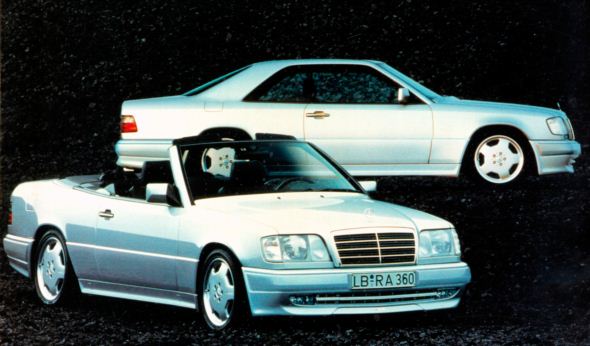
A fundamental innovation was also the offer of a four-cylinder variant of the Cabriolet at over 20,000 Deutschmarks cheaper than its six-cylinder counterpart. The new entry-level model had the 136 kW, 2.2-litre, four-valve engine, which since its appearance in October 1992 had served in the Saloon, the Estate and the Coupé of the 124 series.
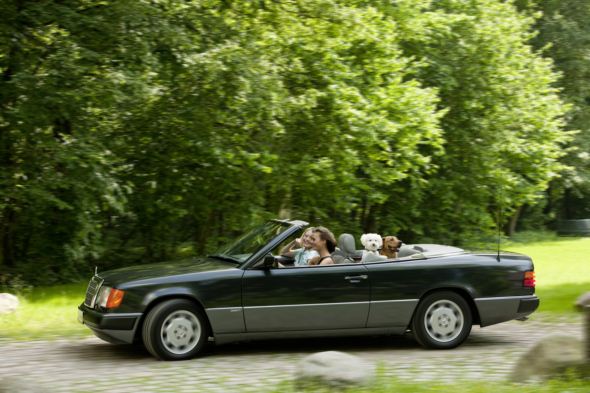
The Cabriolet was also fitted with the 2-litre version of the four-cylinder, four-valve engine exclusively for export to Italy, Greece and Portugal; this unit generated an output of 100 kW and had served since October 1992 in the export version of the Coupé.
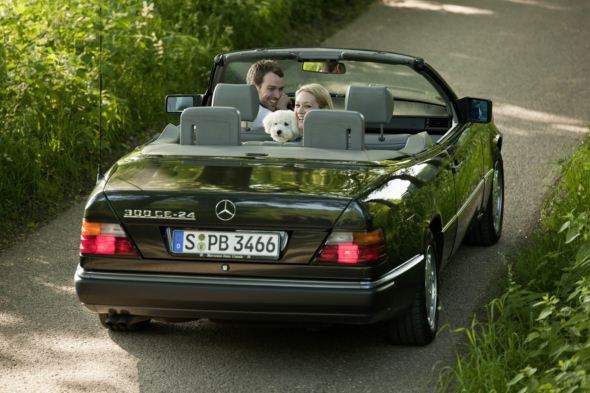
All three variants were now equipped as standard with the electrohydraulic soft top, previously only available at extra cost, which additionally featured a modified interior covering with improved warmth and noise insulation.
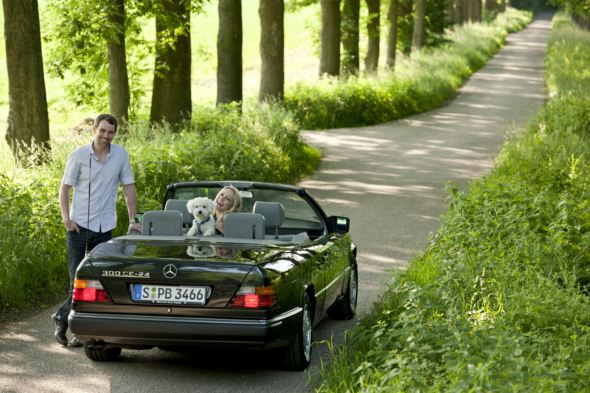
To coincide with the sales launch of the redesigned models, a new nomenclature also came into effect for the 124 series in June 1993. Analogous with the S-Class and the new C-Class, the intermediate class was now called the E-Class. The model designations also followed a modified system, in which letters documented a car’s membership of a certain class. The letter(s) were followed by a three-digit number based as previously on engine displacement.
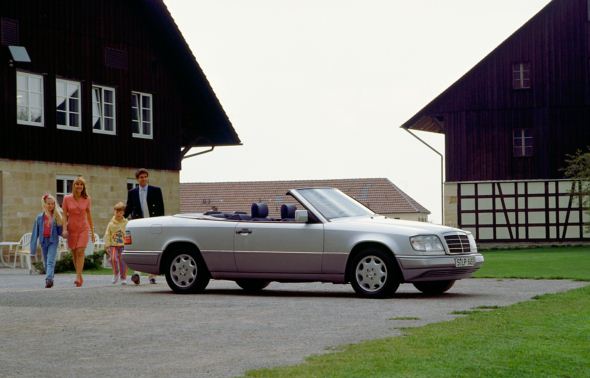
The E suffix that was formerly used to indicate a petrol engine with fuel injection could now be dropped, since carburettor engines were now a thing of the past and coding with a “C” or a “T” to denote the plainly obvious body variant was also deemed superfluous. In line with the new system of nomenclature the Cabriolets were now known as the E 220 Cabriolet and E 320 Cabriolet; however, the nameplate identified only the model’s class and displacement.
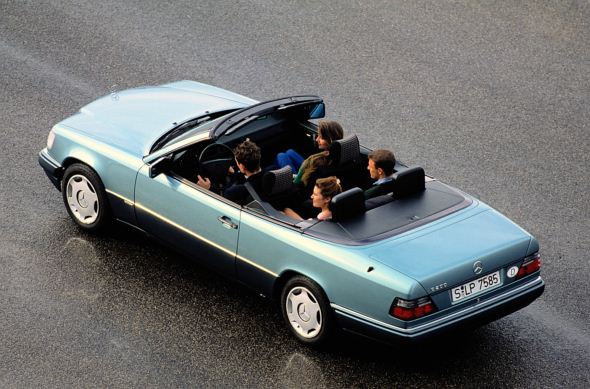
From September 1993 on there was also a more powerful variant for the Cabriolet enthusiast with sporting ambition in the form of the E 36 AMG, which was equipped with a 195 kW, 3.6-litre four-valve engine from AMG. The new top-of-the-range Cabriolet could also be told apart from its less dynamic sister models by its discreetly enlarged add-on parts. The front spoiler, side skirts and rear apron were painted in the same colour as the car and harmoniously integrated into the body shape; the overall image was completed with standard-fit AMG-designed alloy rims (diameter: 43.2 centimetres).
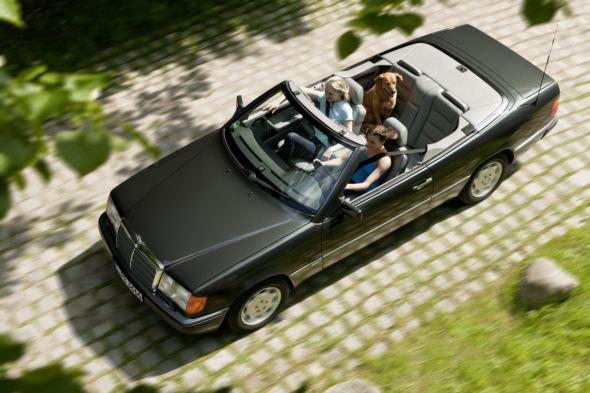
In order to offer customers with less performance-oriented ambitions a more affordable entry-level model, the E 200 Cabriolet, which had been produced since July 1993 for export, was brought into the domestic sales range in March 1994. Its price tag was more than 10,000 Deutschmarks below the cost of the 2.2-litre variant, although this saving was accounted for by a number of deletions from the equipment package: alloy wheels, leather upholstery and heated seats no longer came as part of standard equipment as with the sister models, but were available at extra cost.
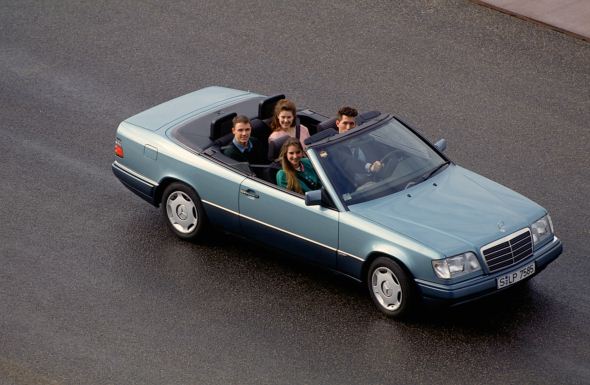
Built until July 1997, the E-Class Cabriolet was the last variant of the 124 series to remain in production. In total 33,952 examples were produced, 15,380 with four-cylinder engines and 18,572 with six-cylinder engines. The proportion of E 320 Cabriolets sold for export was above average at over 75 percent, a fact that has long been part of Mercedes-Benz tradition, particularly where the more exclusive models in the company’s passenger car range are concerned.
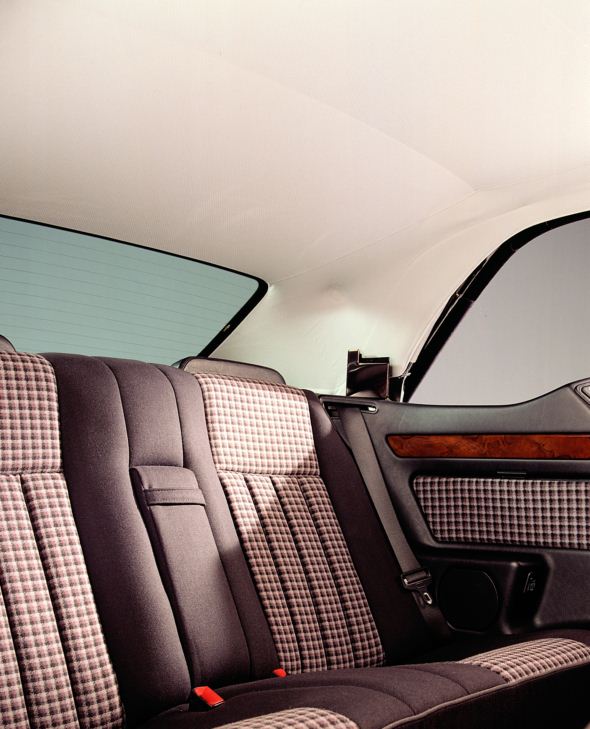
Production figures for Mercedes-Benz A 124 series (1991 bis 1997)
| Models | Internal designation | Production period: pre-production to end | Number of units |
| 300 CE-24 Cabriolet | A 124 E 30/2 | 1990 – 1993 | 6343 |
| E 200 Cabriolet | A 124 E 20/2 | 1993 – 1997 | 6922 |
| E 220 Cabriolet | A 124 E 22 | 1992 – 1997 | 8458 |
| E 320 Cabriolet | A 124 E 32 | 1992 – 1997 | 12,229 |
| E 36 AMG Cabriolet | A 124 E 36 | 1993 – 1997 | * |
| Total | 33,952 |
* not documented separately
